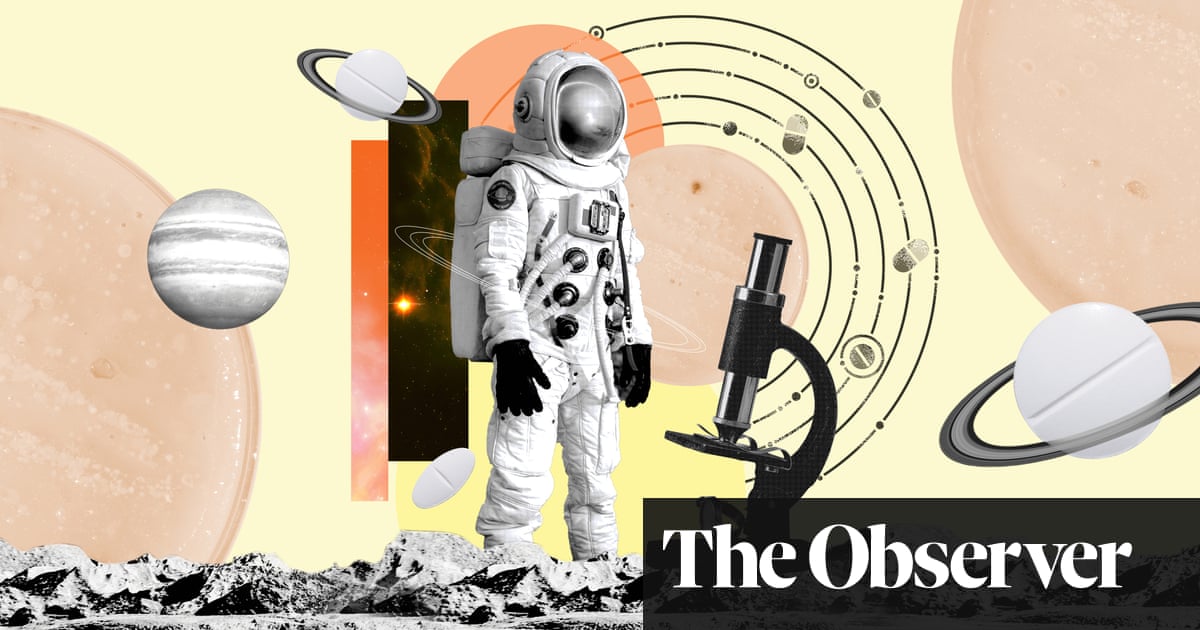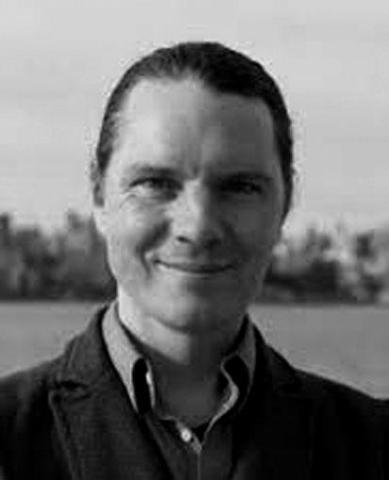
In a small lab, squeezed into the corner of a skyscraper in downtown Tel Aviv, Israeli entrepreneur Yossi Yamin is proudly holding what he calls “a little James Bond-style suitcase factory, powered by the sun”.
As with many of 007’s finest contraptions, initial impressions are inauspicious. But in the past four years, these little metal boxes, coated in solar panels, have repeatedly blasted into orbit on the back of a SpaceX rocket, bringing groundbreaking new insights back to Earth for things ranging from the behaviour of leukaemia cells to the best ways of generating lab-grown steak.
As CEO of SpacePharma – a company that works with clients around the world, from children’s hospitals to big pharma – Yamin has helped to pioneer a new industry. Using technology developed at the Technion, Israel’s oldest university, increasing numbers of biologists are able to miniaturise their experiments and send them to the International Space Station (ISS), where they can be remotely controlled from the ground.
“This is not science fiction any more,” says Yamin. “Last year, we accomplished seven in-orbit experiments, and the number is growing. Next month, we are flying five experiments into space in realms ranging from the future of skincare to longevity drugs and brain diseases.”
The idea of leaving Earth to further medicine goes back to the dawn of the space age. Needing a way of justifying the enormous cost of launching as many as 50 flights a year, Nasa suggested that its astronauts could multitask, using their time in orbit to pursue a cure for cancer or the many other illnesses afflicting humankind.
It is the absence of gravity that has long made space such an attractive playground for teasing apart some of biology’s intricacies. The pull of the Earth’s gravitational field can mask some of the ways in which cells communicate, making it harder to understand why they behave as they do. Gravity makes it far more complex to keep stem cells in their purest and most useful state for extended periods, constantly nudging them and encouraging them to develop. It also makes it much more difficult for scientists to study the complex crystal structures of key proteins, for example those linked to cancer, viruses, genetic disorders and heart disease. Growing these fragile crystals from scratch is crucial for analysing how a tumour or a virus evolves, or detecting little pockets where a new drug could sit. But when they are grown on Earth, gravity tugs at them, obscuring how they really look.
“Learning about the 3D structure of proteins involved in certain health conditions can give us a better understanding of how their function could be improved or inhibited,” says Prof Thais Russomano, a space medicine expert, and CEO of thinktank InnovaSpace. “Crystals grow bigger in space and have fewer imperfections. We can get some idea through computer-generated simulations, but accurate models can only be created by having a lot of data, which we don’t always have.”
This has already yielded major breakthroughs. For Massachusetts–based biotech company MicroQuin, a series of experiments conducted on the ISS in the past four years have helped kickstart a new pipeline of drugs for ovarian and breast cancers, as well as traumatic brain injury, Parkinson’s, and even influenza, based on a family of proteins called TMBIMs.
Scientists have long wished to target TMBIMs with drugs because they help regulate a cell’s internal environment. In certain cancers and neurodegenerative diseases, this environment becomes toxic, and these proteins could be used as a switch to reverse those changes – if enough is known about how to manipulate them. But while gravity has made TMBIMs notoriously difficult to crystallise on Earth, MicroQuin has been able to do so in space.
“The potential is fascinating,” says Scott Robinson, MicroQuin’s founder and CEO. “Influenza is a good example, because when the virus goes inside a cell, it changes the entire environment to be highly oxidative. But if you stop that change using TMBIMs, you can fully stop influenza infection. It could also be used as a combination therapy to sensitise cancer cells to immunotherapy.”
Tragedy and triumph
The field of space medicine was accelerated by one of the worst disasters in Nasa’s history. In February 2003, space shuttle Columbia exploded as it re-entered the atmosphere over Texas and Louisiana, killing all seven astronauts on board. Damage to the shuttle’s left wing, which had occurred two weeks earlier during the launch, had made it too fragile to withstand the enormous pressures of re-entry.
Three months later, a series of vials were discovered among the debris that contained crystals, somehow still intact, from an experiment the Columbia astronauts had been working on during their time on the ISS. It provided biologists with vital information regarding the structure of a protein called interferon alfa-2b, the active ingredient in the drug Intron A, which at the time was a standard treatment for melanoma and hepatitis C.
“This was one of the goals of the mission,” says Paul Reichert, a drug delivery researcher at Merck and a veteran pioneer of space medicine, who consulted on the project. “I was so happy at that time, because we were able to supply the families with some positive information.”
Interest began to grow among the pharmaceutical industry, and in 2017, Reichert was involved in a mission where Merck sent its drug Keytruda – which is used to treat many different cancers, from lung to head and neck – to the ISS. The resulting data is helping the company develop a highly concentrated form of the drug, which could be injected by a GP.
“One of the issues with monoclonal antibodies as therapeutics is that they have to be given as infusions in hospital settings every few weeks,” says Reichert, who has since advised Eli Lilly and the Michael J Fox Foundation on conducting experiments in space. “It takes several hours, while an injection takes minutes. So this not only improves the quality of life for the patient, but it could also cut the cost of the therapy.”
In the coming years, space could also transform another medical field that has been struggling to live up to expectations. Stem cells were supposed to usher in an era of regenerative medicine, helping to grow back damaged organs and offering new hope to people with heart or liver failure.
Yet so far, scientists have struggled to develop viable treatments. Not only is the process costly and inefficient – for every million stem cells grown, only around 100 can be successfully reprogrammed into a heart muscle or liver cell – but the ones that are developed do not integrate well when transplanted into the body.
“The quality of the cells isn’t always great,” says Clive Svendsen, executive director of the regenerative medicine institute at Ceders-Sinai in Los Angeles. “They often pick up abnormalities or grow too slowly. But the question is: can you grow a better cell in orbit?”
Svendsen and his colleagues are attempting to find out through a series of experiments in partnership with Nasa. A bag of stem cells is flown to the ISS, where their growth can be observed from the ground via a remote video feed. Early indications seem to be that they do flourish better than on Earth, raising the possibility that in future, stem cell-based therapies could even be manufactured in space.
“It would have to hold quite dramatic benefits over Earth for it to be practical, because the costs of going up there are so high,” says Svendsen. “But if they can be turned more reliably into heart cells, kidney cells, neurons, of a much higher quality, then perhaps you could look into generating cell replacements in space before bringing them back down for transplantation.”
High cost, high reward
The major problem with doing research in space is the cost. The price of getting a single experiment to the ISS and back has been reported as being in the region of $7.5m, particularly if it includes astronaut time, a fee that is currently covered either by Nasa or research grants. It is also incredibly competitive, with thousands of scientists around the world vying to have their experiments flown into orbit.
But space research is increasingly shifting from public to private providers, a new model that presents challenges and opportunities. Nasa has already declared its plan to shut down the ISS by the end of 2030, with the Houston-based company Axiom Space intending to replace it with the first commercial space station.
Although offering space vacations to the ultra-rich is Axiom Space’s main revenue model, the money will be used to build extra modules on the space station for conducting scientific experiments. Svendsen predicts that this will create more opportunities for researchers and pharmaceutical companies alike, and potentially even open the door for manufacturing entire therapies in space.
SpacePharma and other private companies such as Ice Cubes are aiming to make medical research in space even more widely available by offering to automate experiments, taking them up into low Earth orbit on launch rockets and then back down again. This removes the need for a space station altogether, as well as cutting costs. “I expect these private initiatives to accelerate as launch costs reduce and the number of annual launches worldwide continues to increase,” says Russomano.
But it is not practical for everyone. There are tales of companies, such as Boston-based Angiex, which made intriguing breakthroughs relating to a possible new cancer drug through experiments in space before abandoning the work because it was too costly and time-consuming. While Svendsen is excited about the potential of being able to grow stem cells in space, he is mindful that it may be simpler to learn about why they fare better in zero gravity, and then trying to replicate that on Earth.
“If we find that they are differentiating better in space, and we can understand the genes that make that happen, we could mimic that down here through Crispr editing,” he says. “Space is also teaching us a lot about automating stem cell production, which has been a struggle. If we could use this knowledge to get a system where you could put 100 cells in and two weeks later get 1bn cells out the other side, that’s something everyone is striving for.”
There are many unknowns, but if it transpires that space is the only place to get good quality stem cells, it will pave the way to a future of regenerating body parts among the stars.
“Who knows, maybe in the future we will have satellites flying around growing organs like in a science fiction movie,” says Svendsen. “Maybe we can grow a whole heart in zero gravity that we can then utilise back on Earth. We’re the pioneers in this area. We will push it as hard as we can and see what happens.”












